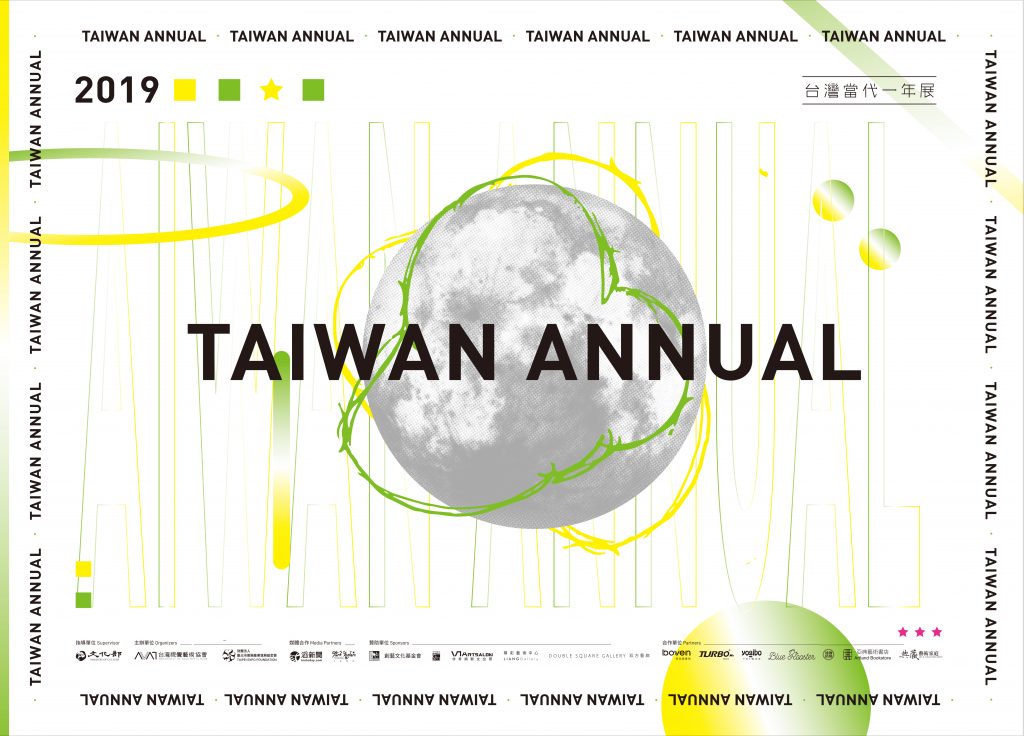關於展覽|
今日位於桃園大溪、龍潭、復興與新竹關西的四方交界之處,同時也是地質學上的河川襲奪作用與斷頭河地形的分岔點。藝術家以一個曾經形成多族群交遇的複雜地理為核心,指出今日在面對移入的「定居者」,類似於定居型殖民狀態所鍛造出的敘事結構與記憶形式,有必要回溯至這個區域五個族群的關係(客家人、泰雅人、凱達格蘭人、道卡斯人、閩南人),以及人們認知土地、山脊、谷口、岩石等自然物之間的關係最為複雜的時期,並以「死亡」輻輳而出的「墳」、「屍骨」、「紅壤層」作為敘事的推動力,重新校準敘事者的位置,相互調整說法與視角、呈現多族群、物群的地理與動態的敘事關係。
一方面,作為《斷頭河計畫》的一部分,本次的展出延續藝術家關注的主題,在與五個不同群體的接觸過程中製作的影像地誌,進行歷史的校準與協商。包含「原、原衝突」與「原、漢衝突」、地形與族群交界的關係,以及在多重的衝突、地界轉變、死亡位址產生的過程中,所形成無法分開表述的多元視角。另一方面,這次計畫的發表,以展覽、靈異聊談會、工作坊、論述報告、地方放映會等複合方式進行。透過不同的說話者,展出七件ㄧ組的影像集,並繪製出彼此差異卻相互重疊的記憶地景、宇宙觀與接觸地帶,以問靈、自然物溝通而出的地理關係與界域,也保留更多參與者得以持續加入的協商空間,持續計畫的實踐。
展區一
展覽地點|FreeS Art Space(台北市中山區新生北路三段82號B1)
展覽日期|2019.11.02 (六) – 2019.12.07 (六)
參觀時間|週二-週六 11:00 – 19:00
展區二:菱潭現地行動展
展覽地點|菱潭街興創基地(桃園市龍潭區南龍路44號)
展覽日期|2019.11.09 (六) – 2019.12.22 (日)
參觀時間|週六、週日 12:00 – 18:00
計畫簡介|
《斷頭河計畫》藉由行動研究、展演實踐,與文化研究、歷史學、人類學、地理學的書寫、研討,試圖從鬼魂、歹物、屍骨的思辨,連結原客衝突、食番肉、原原衝突、部落地界、定居者的問題,持續以創作/研究論述、影像集、另類檔案、地誌書寫的方式,展開對話與爭議,試圖打開一個跨領域的問題場域,以及具有實質跨學科潛質的工事,從而導向具批判性的行動。目前正在進行的項目包括:「遺落之地」、「食人的地理」、「閻王崎」等複合性行動創作計畫。而在2019年開始的「浪漫斷頭河」台三線巡迴計畫,強調回返至地理的場址、村落、常民空間進行系列的計畫性生產、工作坊與非正式展演。
關於藝術家|
梁廷毓
國立台北藝術大學藝術跨域研究所碩士,目前主要結合地方調查、研究,以計畫性的藝術行動、文化干擾、複合媒體實踐,關注鬼魂的概念,如何涉及地理、歷史、記憶與族群關係等議題,並以動態影像集、死亡考察、鬼魂接觸、製圖、書寫的方式,進行現階段的藝術計畫。
活動資訊|
展覽對談會
■ 墳.屍骨.紅壤層(一)
時間|11.02 (六) 15:30-17:30
地點|福利社(台北市中山區新生北路三段82號B1)
與談人|王聖閎(藝評人)、梁廷毓(藝術家)
■ 墳.屍骨.紅壤層(二)
時間|12.07 (六) 14:00-16:00
地點|福利社(台北市中山區新生北路三段82號B1)
與談人|龔卓軍(國立台南藝術大學藝術創作理論研究所 副教授)、梁廷毓(藝術家)
計畫講座
■ 讓屍骨說話?
時間|11.09 (六) 14:00-16:00
地點|福利社(台北市中山區新生北路三段82號B1)
講者|梁廷毓(藝術家)
■ 浪漫台三線的想像與反思(一)
時間|11.17 (日) 14:00-16:00
地點|龍潭里活動中心 (桃園市龍潭區南龍路21號)
與談人|劉慧真(國立東華大學族群關係與文化研究所 博士)、梁廷毓(藝術家)
■ 浪漫台三線的想像與反思(二)
時間|12.21 (六) 14:00-16:00
地點|龍潭里活動中心 (桃園市龍潭區南龍路21號)
與談人|劉瑞超(國立交通大學國際客家研究中心 研究員)、梁廷毓(藝術家)
講演暨放映工作坊
■ 斷頭河地誌
時間|11.17 (日) 10:30-12:00
地點|龍潭里活動中心 (桃園市龍潭區南龍路21號)
■ 番肉考
時間|12.21 (日) 10:30-12:00
地點|龍潭里活動中心 (桃園市龍潭區南龍路21號)
研究發表
■ 研討會議
參與會議名稱|2019年 台灣人文學社年會:人文之「後」
參與會議日期|11.23-11.24(本文將於其中一天的議程及時段進行發表)
參與會議地點|國立中興大學(台中市南區興大路145號)
發表題目|〈墳、屍骨、岩壤層:朝向一種島嶼之靈與地鬼合一的地理歷史觀〉
影展放映場
■ 影片放映
參與影展名稱|第23屆 烏山頭影展
參與影展時間|11.25-11.29(影片將於其中一天的放映單元及時段放映)
放映影片|〈番顱考〉(26min,單頻道影像,2018)
計畫聊談會
■ 自然溝通與通靈技術
時間|11.30 (六) 14:00-16:00
地點|福利社(台北市中山區新生北路三段82號B1)
講者|往櫺(台灣靈異研究學會會長、靈體溝通的實踐者)
與談人|梁廷毓(藝術家)
各活動的詳細時間、地點若有變更時,請密切注意活動專頁。
Necropolis ‧ Necro ‧ The Red Soil
LIANG Ting-Yu Solo Exhibition
About Exhibition|
Serving as the mark of the geomorphological phenomenon of river capture, the artist sees this juncture of Taoyuan Daxi, Longtan, Fuxing and Hsinchu Guanxi as the core of the past intermingling multi-ethnic society, pointing out today’s incoming settlers in a way corresponding to the formation of the memory as well as the narrative structure of settler colonialism. It is thus necessary to trace back to the interrelationship between the five ethnic groups in this area, the Hakka, the Atayal, the Ketagalan, the Taukat, and the Hoklo, along with their understanding of the natural ties among the land, ridge, valley, and rocks, which would present themselves in their most complicated state in history. The narrative push of ‘necropolis/grave’, ‘necro/corpse’, and the ‘red soil’ derived from the idea of ‘death’ refocuses on the position of the narrators, modifying and reshaping the content and perspective to reveal a multi-ethnic, multi-species geography as well as a dynamically flowing narrative.
As a part of the research and art project, this exhibition continues to explore the artist’s consistent focus, dealing with the investigation as well as negotiation of history, based on the topology created through interaction of the five groups. Such interactions include that of the indigenous themselves, the indigenous and the Han, the geographical and ethnic convergence, the unique collective perspective formed through endless conflicts, the shifting borders and death sites. In addition, this exhibition includes a series of events such as the psychic discussion group, workshop, statement presentation, local screening and more. The exhibiting video collection, through different speakers, illustrates their overlapping and distinctive memory of landscape, cosmology and contact field, and by practicing spiritual inquiries, the geographical interrelationship as well as the borders of natural elements have opened up a space for negotiation, which enables the continuance of the realisation of the plan.
Exhibition Zone 1
Place|FreeS Art Space
Dates|11.02 (Sat) – 12.07 (Sat)
Opening Hours|11:00 – 19:00
Exhibition Zone 2
Place|Ling-Tang Street Creative Hub
Dates|11.09 (Sat) – 12.22 (Sun)
Opening Hours|Saturdays and Sundays, 12:00 – 18:00
Introduction of the project|
Through action research and exhibition practice, overlapped with the field of cultural studies, historical science, anthropology, and geography, the art project intends to connect the multiple issues including conflicts among the indigenous as well as conflicts between the indigenous and the Hakka, the settlers, the indegenous-meat-eating, and tribal boundaries. Adopting the methodology of creative/research discourse, film collection, and topological writing, it aims to open doors to a probelmetic interdisciplinery zone in order to further a dialogue, a debate, a solid cross-field work that directs towards critical artistic approaches.
About Artist|
LIANG Ting-Yu
Liang Ting Yu (b. 1994, Taiwan) is currently enrolled in the Graduate Institute of Trans-disciplinary Arts at the Taipei National University of the Arts. Liang’s practice focuses on integrating regional investigations and studies with project-based art actions and mixed media art. He examines issues related to historical archives and ethnic relations, and has recently expanded into exploring archives and local myths and legends. Using motion images, local ghost stories, image production, and writing, he creates art that looks into relationships between ghosts and topography.










